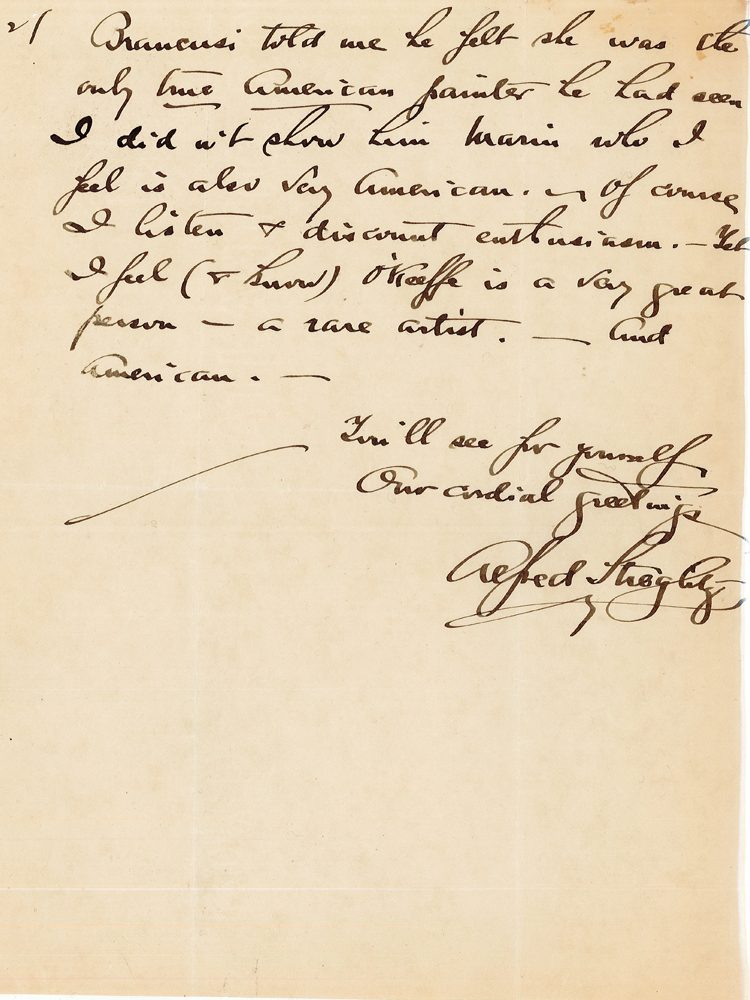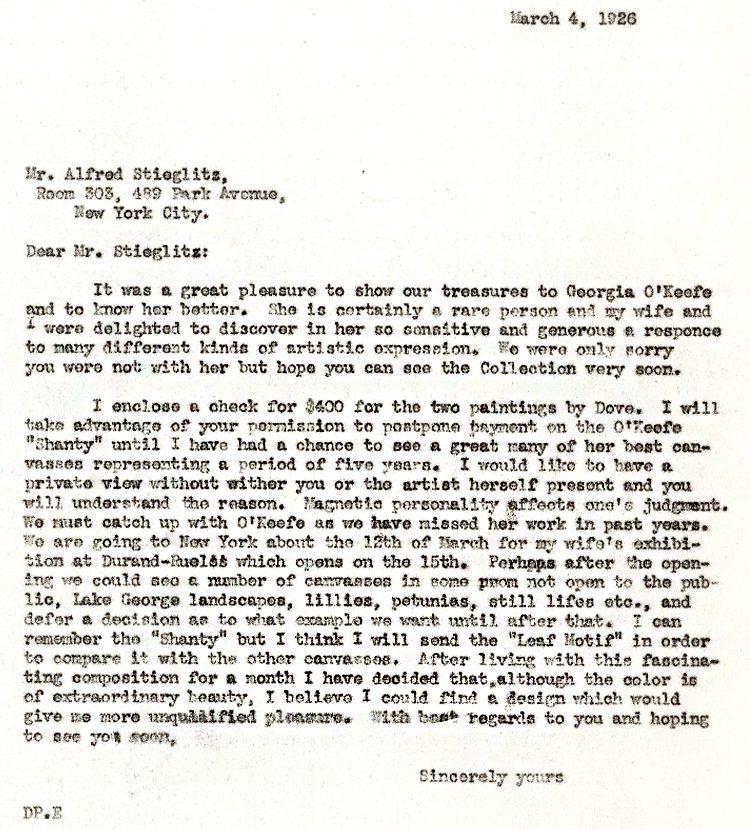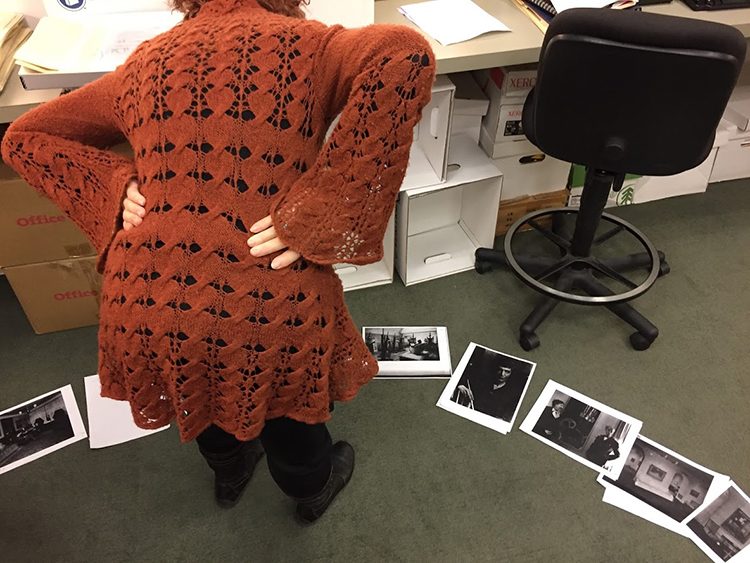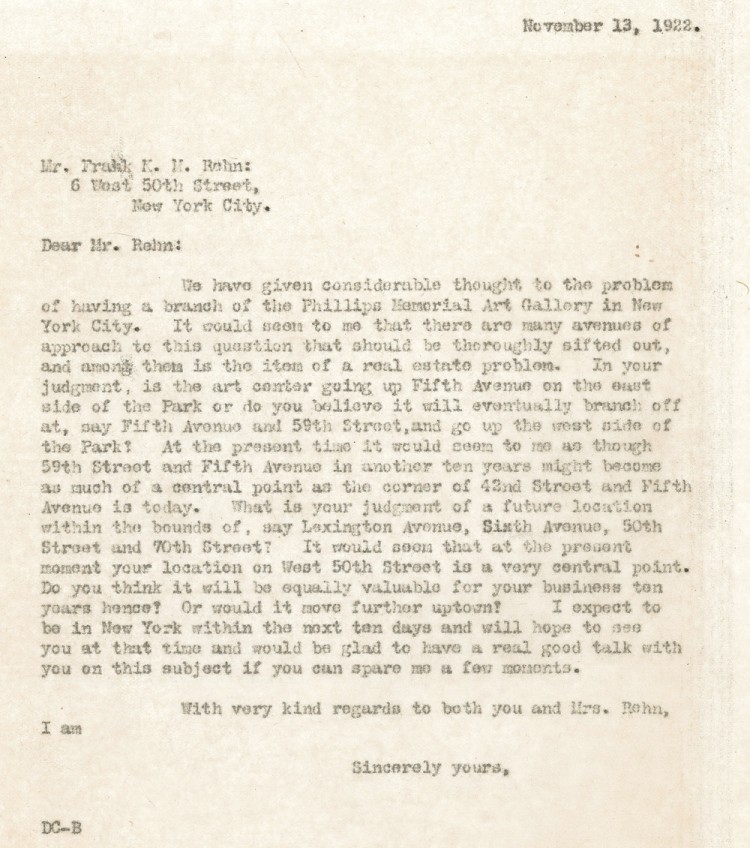As I worked on an ongoing project to organize Duncan Phillips’s correspondence, I was surprised to see many letters that were sent and received on subsequent days as well as on the same day. Phillips was a prolific letter writer who probably wrote at least ten letters a day, primarily to artists and art galleries.
Phillips’s correspondence with photographer, gallery dealer, and advocate for modern art Alfred Stieglitz began in 1926 and continued until 1946, the year of Stieglitz’s death.
On March 4, 1926, Stieglitz wrote a letter to Phillips in which he spoke about his wife Georgia O’Keeffe’s recent visit to The Phillips Collection. He stated, “She returned from Washington full of rare enthusiasm. She thoroughly enjoyed every moment with you and Mrs. Phillips and the pictures. She tells every one worthwhile what splendid work you are doing. Your Courbets and Daumier, the Renoir, El Greco she tells me about…She is painting and doing incredible work.”

Letter from Alfred Stieglitz to Duncan Phillips, March 4, 1926 (page 1)

Letter from Alfred Stieglitz to Duncan Phillips, March 4, 1926 (page 2)
Phillips replied on the same day: “It was a great pleasure to show our treasures to Georgia O’Keefe and to know her better. She is certainly a rare person and my wife and I were delighted to discover in her so sensitive and generous a responce to many different kinds of artistic expression. We were only sorry you were not with her but hope you can see the Collection very soon.”

Letter from Duncan Phillips to Alfred Stieglitz, March 4, 926
According to the 1922 Annual Report of the Postmaster General, smaller cities averaged three to four mail deliveries per day, and larger cities received deliveries three to seven times a day. We can only dream of such an efficient mail service today.






